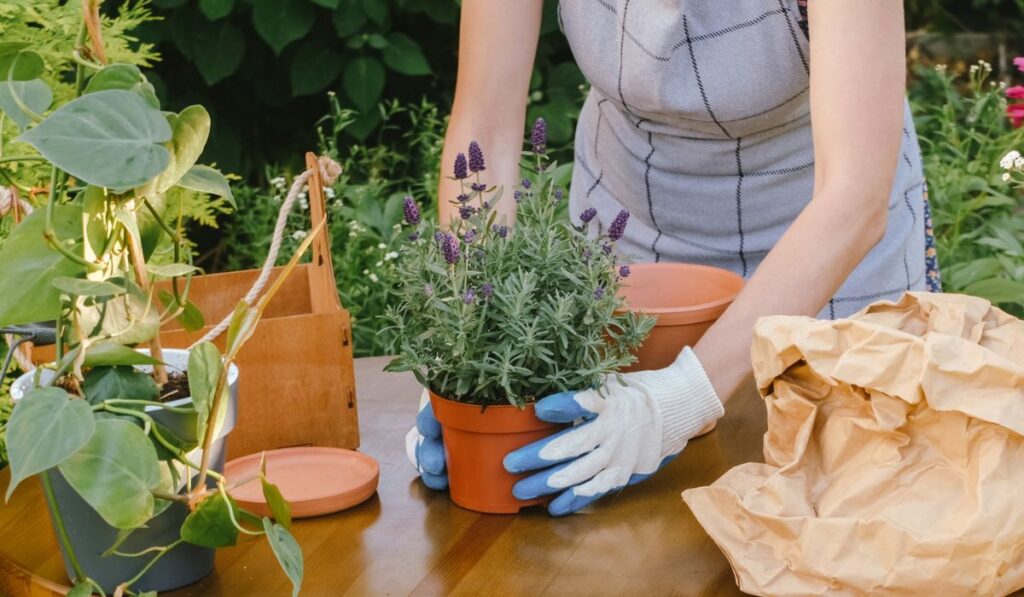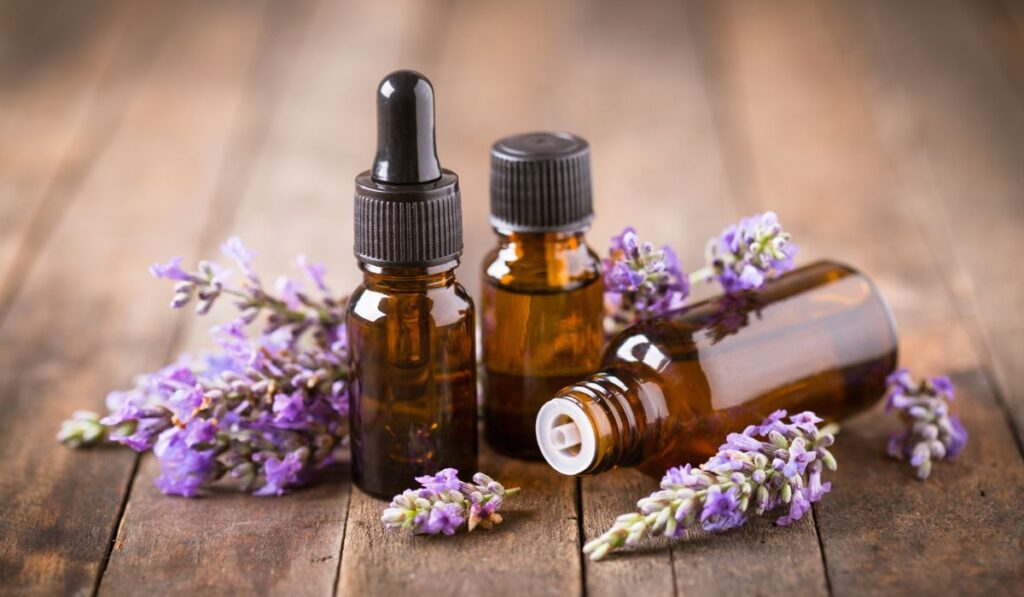Lavender is known for its beautiful scent and vibrant purple flowers. As a perennial, it’s a plant that keeps coming back, and with a bit of care, your lavender bushes can thrive and make a great addition to any garden.
Lavender is generally planted in April or September and can be planted along borders, in pots, or as hedges. Lavender doesn’t tolerate wet conditions, and most diseases are preventable by keeping it dry, having ample drainage, full sun, and having good air circulation.
From cooking to beauty products, lavender is highly versatile and is one of the most commercially grown plants for fragrances. No wonder it is so prevalent in homegrown gardens that allow people to enjoy the aromatic scent in their homes, cooking, and gardens. By planting lavender, you can enjoy this fantastic plant all summer long.
When Should You Plant Lavender?

Knowing when to plant lavender (on Amazon) depends on where you want to plant it and if you are starting from seeds, cuttings, or developed plants.
Planting Lavender In Borders
Lavender makes a great, colorful piece to border a garden with. You can prune it to keep it compact, and it won’t overtake other plants. To use lavender in a border arrangement, it is best to plant it in April or March if the weather is mild.
Lavender will become stressed if planted too early in the spring when the ground is really wet. Since it is from the Mediterranean, lots of sun and drainage are required to have this plant flourish.
If you have missed the spring planting season, you can also plant it in September and even October if the soil is still mild and the first frost hasn’t occurred yet.
Planting Lavender in Pots
Like when planting it on a border, April is the best season to plant lavender in pots. This will prevent them from drying out too quickly before the roots have a chance to establish in the container.
You want to ensure the pot has holes in the bottom to offer plenty of drainage, or your plant will get root rot, which happens when the roots are too wet. The soil should be a mixture of peat-free compost and grit and placed in full sun.
Planting Lavender Cuttings
Using a lavender cutting is an easy way to multiply your lavender plants that won’t break the bank. There are two ways to use the cutting propagation method, depending on when you wish to do this.
The first is in spring, which involves taking a softwood cutting from a non-flowering stem. The second propagation method via cutting occurs during the summer or early fall and consists of taking a semi-hardwood cutting from new growth.
Planting a Lavender Hedge
The best time to start a lavender hedge would be in April or September if you missed the spring season. The important thing is to avoid the summer months like June, July, or August and don’t plant in November through February. High heat and, in turn, cold temperatures don’t mix with an unestablished lavender plant.
Sowing Lavender
It isn’t easy to get lavender to grow from seeds, but if you are up to the challenge or require a significant amount of lavender, it could be more cost-effective.
It’s best to sow the seeds in late winter to early spring, so they are ready to be transplanted come April. Use Jiffy pellets (on Amazon) or something similar to make planting easier down the road. You can also sow the seeds in module trays with compost instead of soil.
In either case, sow and lightly cover with compost or perlite to keep moisture in. Put a propagator cover (on Amazon) over the tray and place it in a cold place like the fridge or garage for three to four weeks. After three to four weeks, place them in a greenhouse or somewhere that gets lots of bright sunlight.
What Climate Does Lavender Grow Best In?
Originally from the Mediterranean, lavender is accustomed to a more dry and sunny climate. Due to this reason, a wet, humid environment won’t be the best fit for lavender, and you might struggle to keep the plant happy if you are located in that environment.
However, that doesn’t mean you can’t have lavender, as it makes a good house plant, given the proper consideration for its environment. The key is not to overwater and provide ample sunlight.
How to Care for Lavender
Planting Lavender
Growing lavender can be pretty easy if you are in the current climate. It will need to be planted 12 to 18 inches apart in an open area for plenty of full sun and good air circulation. A wet plant will not be a happy plant, and that air circulation can help dry it out between waterings.
Well-drained and slightly alkaline soil with pH levels between 6.7 and 7.3 is preferred. Adding sand to the ground can also help with drainage.
If you are planting lavender in a garden bed, you want to plant it on a small mound to further help with drainage. If you use a container, use a high-quality potting mix specifically engineered for maximum drainage, like cactus soil (on Amazon).
On top of planting in the current soil type, it’s also essential to regularly fertilize your lavender plants to ensure it keeps producing colorful and fragrant blooms. A good rule of thumb is to look for fertilizer (on Amazon) that advertises blooms rather than a mixture for vegetables or fruits.
Continued Growth
Since lavender blooms in the summer, you can pinch off faded flowers to encourage it to continue producing throughout the warm season. Prune often and lightly to promote branching, especially in the spring when it’s producing its first new growth of the year.
When pruning, you mustn’t cut into the hard woody parts of the stem. It’s vital to leave plenty of the green part left to continue growth. You are aiming to make a dome-like shape with the stems in the middle being longer and gradually reducing in size to the outer edges of the plant.
Winter
Since lavender is a perennial, you can save the plant and allow it to come back the following year. However, doing this requires a little bit of work. Being an evergreen shrub, lavender will maintain green foliage all year round, but you want to trim it back to a small mound.
Make sure that there is plenty of green left on the plant, and don’t cut into the woody parts. You can also leave any flowers still on the plant to provide food for birds in those colder months.
How to Use Lavender

Lavender is a highly versatile plant that can be used in almost any aspect of our lives.
- Fragrance: Add to a sachet or potpourri to enjoy its aromatic scent.
- Cooking: From sauces, marinades, desserts, and bread, lavender is versatile in its taste profile.
- Tea: Fresh lavender tea has a light floral taste and makes a great hot beverage.
- Herbal Remedies: Ailments such as headaches, insomnia, stress and depression, anxiety, and acne scarring can all benefit from lavender.
- Beauty Products: Not only is lavender a wonderful smell for skin lotions, but it can also help with cleansing due to its antibacterial properties.
- Decor: Dried lavender makes a great addition to home decor, either in bunches or in a dried floral arrangement.
Protecting Lavender from Disease
The most critical part of preventing disease from lavender is providing proper drainage and not allowing the plant to remain moist for too long. Things like fungus, root rot, and crown rot stem from damp conditions that the plant won’t agree with.
On top of that, a weakened plant opens it up to parasites and insects that feed on it and cause disease. Adding sand around the bottom of the plant can help with it drying out faster if you find it is too moist, while not watering as much is also beneficial.
